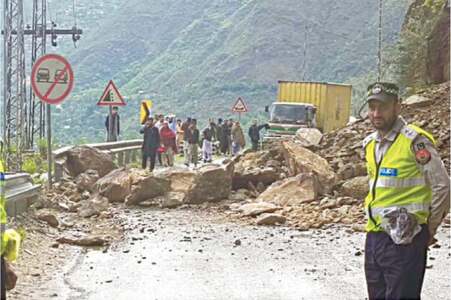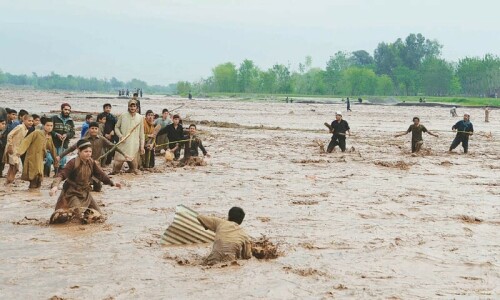ONE of the most iconic black-and-white photographs of the last century shows a woman cradling her severely disabled daughter in her bath, the minimal light illuminating a hauntingly tender composition. The portrait is from Minamata, the Japanese fishing village where 900 were killed and thousands badly affected — including some in utero — by methylmercury poisoning in 1956. On Thursday, experts at a workshop in Karachi on the Minamata Convention on Mercury, to which Pakistan is a signatory, called for implementing the provisions of the international agreement and creating awareness about the importance of regulating the management and disposal of this toxic chemical element. The workshop was organised by the Sindh Environmental Protection Agency in collaboration with other organisations including the United Nations Environment Programme. It was part of an initial assessment project that aims to develop baselines on mercury management and develop national mercury inventories, in other words the preparatory work to ensure that public health and the environment are protected from mercury poisoning, known as Minamata disease.
As history has shown us, the consequences of such a disaster can be horrific. A neurological disorder, Minamata disease can cause a range of chronic disorders of varying severity, including anxiety, loss of appetite, damage to hearing, speech and vision, loss of coordination of muscle movement, and in extreme cases, paralysis, coma and death. As environmental concerns become prioritised across the world, particularly in the wake of climate change, there are increasing efforts to control the use and emission of mercury. In Pakistan, the major sources of mercury include certain industrial and hospital equipment such as thermometers and manometers, dental fillings, jewellery, skin-whitening creams, electric batteries, paints and various species of fish. In fact, the diversity of sources and their place in our daily lives makes the issue one of grave concern. It is therefore vital that the government and health and environmental experts coordinate on a sustained basis with industry leaders to reduce and, where other alternatives are available, phase out the use of mercury.
Published in Dawn, January 2nd, 2017









































